As he says in his fabulous book, Around the World in 80 Gardens, Monty Don is not convinced that the frequent attempt at tropical gardens works in countries such as the UK. He questions whether our need to “transform a dull back garden bowed under northern light into a lush tropical paradise” is ever really a success. I agree to an extent; when it comes to large gardens in particular, exotic planting can look a bit out of sync, and moreover, these plants don’t generally benefit the local fauna.
However, in small, urban gardens, large atypical plants can be transformative in a design; the huge, evergreen leaves of palms and bananas, or the shimmering and rustling of a bamboo, will brighten a tiny, grey, inner-city space, like mine, provide structure and all-year-round interest.
Bananas thriving in Kentish Town
About 18 years ago, my brother and his family moved to a new home in Kentish Town where, in their lovely, small back garden, they inherited a substantial Trachycarpus fortunei (Windmill Palm) and a fairly mature banana plant. This sort of tropical planting was relatively unusual then in London. Unfortunately, one of their teenagers, whilst seeing if the hairy fibres on the trunk would ignite from a cigarette end, accidently burnt the Windmill Palm down to a black smouldering stump, clearly not realising how highly flammable they are.
At least their banana plants thrived. These herbaceous perennials spread by vegetative reproduction, so when more new plantlets sprouted up around the parent, I got permission to uproot a baby and bought it north to my even smaller, and cooler (in terms of temperature, rather than style) garden in Hulme, Manchester.
Largely due to climate change, it is now not at all uncommon to see a wide assortment of tropical trees in gardens and parks throughout the UK, plants that at one time could only grow in some microclimate pockets, often on coastal regions. A more recent addition to the array of tropical planting that I have been seeing everywhere, is the fantastic Tetrapanax papyrifer, the Chinese Rice Paper tree. With their large deeply lobed leaves and panicles of creamy flowers, I think these make a great addition to a small space.
It can be hard to make a tiny inner-city space work well. But I had noticed some larger palms and bananas in adjacent streets to me in Hulme, and had high hopes for this little specimen to provide a welcome splash of colour in a gloomy corner.
Baby banana travelling North
Bananas were named Musa by Carl Linneaus, probably after the Arabic word for the fruit, mauz. Most of the banana plants in the tropics are Musa acuminata. Acuminata describes the shape of the leaf, tapering to a sharp point. However, many of the bananas we see in the UK are Musa basjoo, the Japanese banana (the Japanese word for banana is basho).
So about three years ago, my young Musa commenced its new life in a pot on my roof garden. Concerned about its tenderness I dragged it inside every winter, where it really got in the way the larger it became.
On the roof garden in Hulme
Then, this Spring, after a couple of years of it becoming increasingly root-bound and looking somewhat forlorn, I planted it out in the garden where it flourished, virtually overnight. Every time I looked at it, yet another bright green, new beautiful leaf was emerging, slowly unravelling to reveal a perfect, emerald-green lamina.
Flourishing in the Manchester garden
I am struggling to think of a plant with a larger leaf and certainly no British native ones come to mind, but the tropical lily, Victoria Amazonia, could win the size competition. Banana leaves can become so large because they are native to areas where there is plenty of water and as long as they are also growing in the right temperature, there is virtually no limit to how enormous they can get. The mind boggles.
Banana lamina in Hulme
The leaves have many uses; not least for culinary purposes such as wrapping, grilling, steaming and serving food in South East Asia. Here in Thailand, as I was scootering around the island of Ko Lanta, I passed women folding up the chopped leaves in their gardens and occasionally I would see a neat roll left on a table.
Rolled banana leaves, Ko Lanta, Thailand
Later I was delighted to have my delicious green curry with sea-food served on a banana leaf.
Dinner in Ko Lanta Old Town
However, since the surface area of banana leaves are so large, this makes them more vulnerable to freezing. Back in December the temperature dropped quite suddenly to minus eight in Manchester. I thought I was prepared. I carefully wrapped the trunk in horticultural fleece before the hard frost set in. But the problem with larger leaves is that they are also thicker, which slows down the heat exchange with the ambient air. Sadly, overnight, the frost decimated every lovely leaf on my beautiful plant. I have since read that I should have chopped all the leaves off close to the stem, before the frost set in, to trigger the plant into dormancy. The chop needs to be angled so as to prevent moisture going down back into the stem and causing rot.
Severe frost bite
Perhaps a layer of bubble-wrap as a mini greenhouse would have also helped. But too late now; when I left the UK in mid January, it was looking absolutely wretched and made the entire garden appear even more dismal. It was still swaddled but the latest photo update isn’t looking hopeful. It appears that the stem has collapsed and is probably slowly turning into a festering mush.
Musa departed
Unfortunately, this appears to be the sad end of this Musa’s life. Perhaps I should take a leaf out of Monty Don’s book and just stick to more hardy species.
Now I am in Thailand and seeing banana plants growing profusely absolutely everywhere, indeed a good crop just across from where I am now sitting, my efforts with one small plant do seem faintly ridiculous. Saying that, I am actually very tempted to replace Musa with a Chinese Rice Paper Tree, which on the Royal Horticultural Society hardiness score, H4, are one grade up from the more tender bananas at H3. With more forethought and care, that might be just the right sort of compromise going forward.

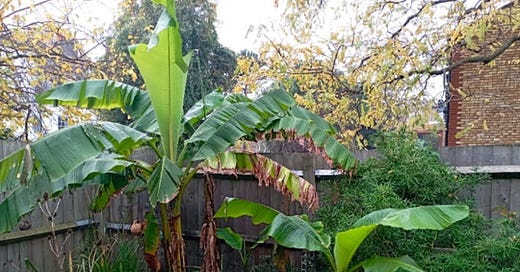



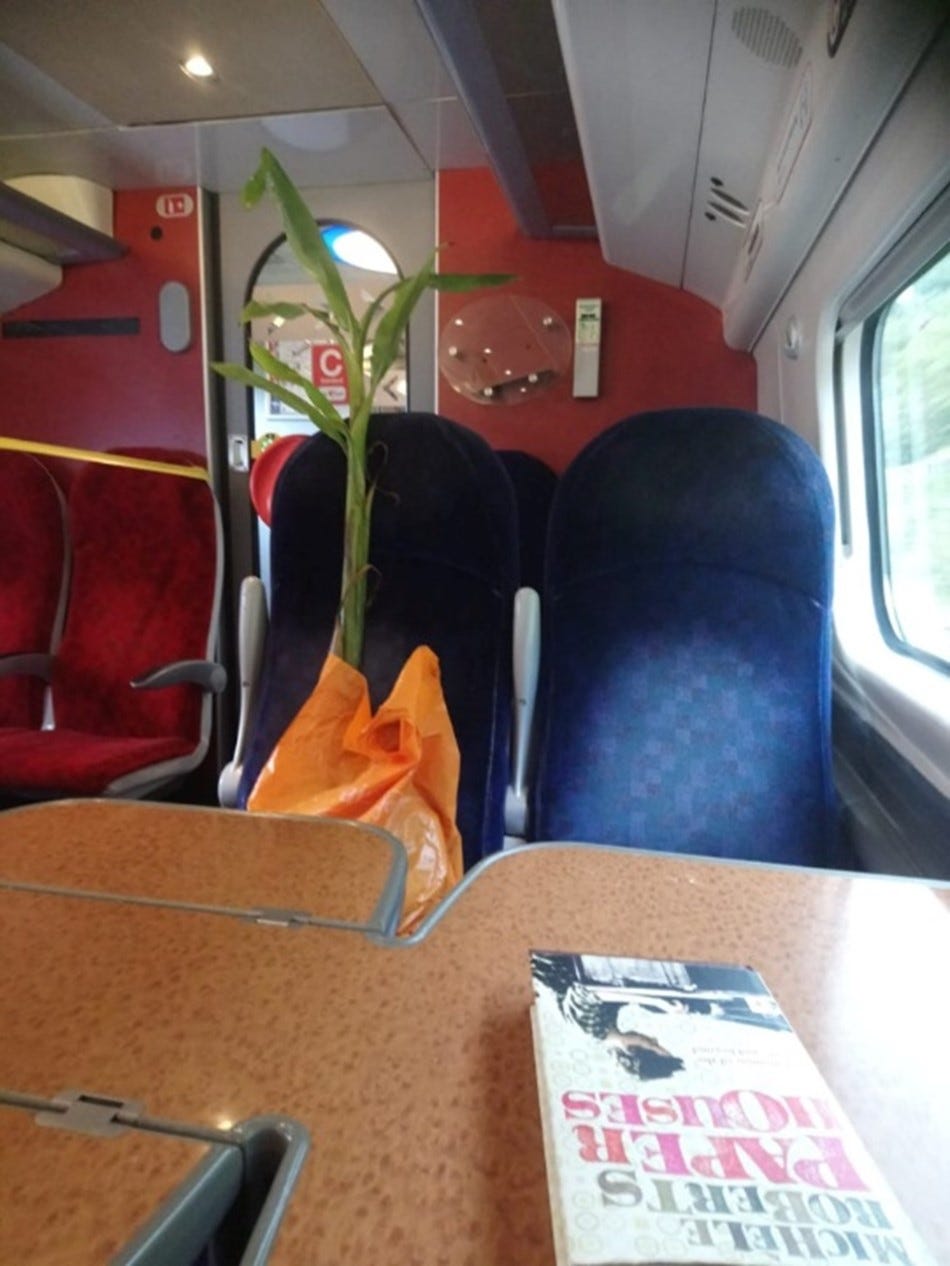
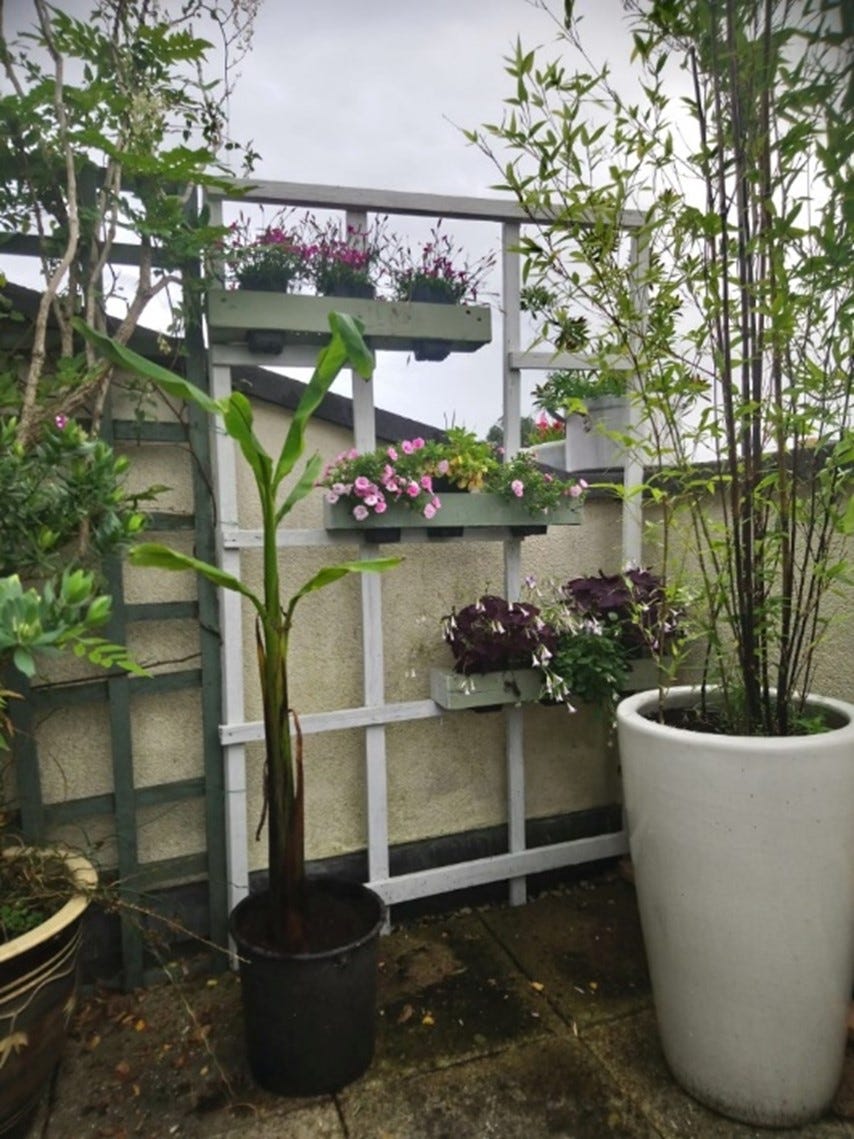

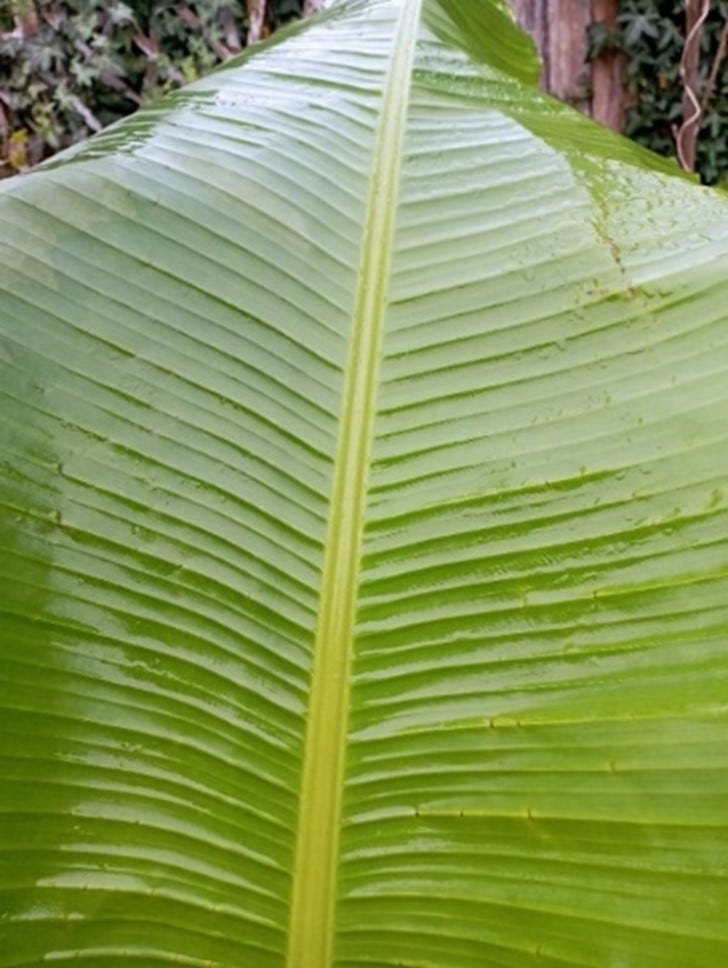
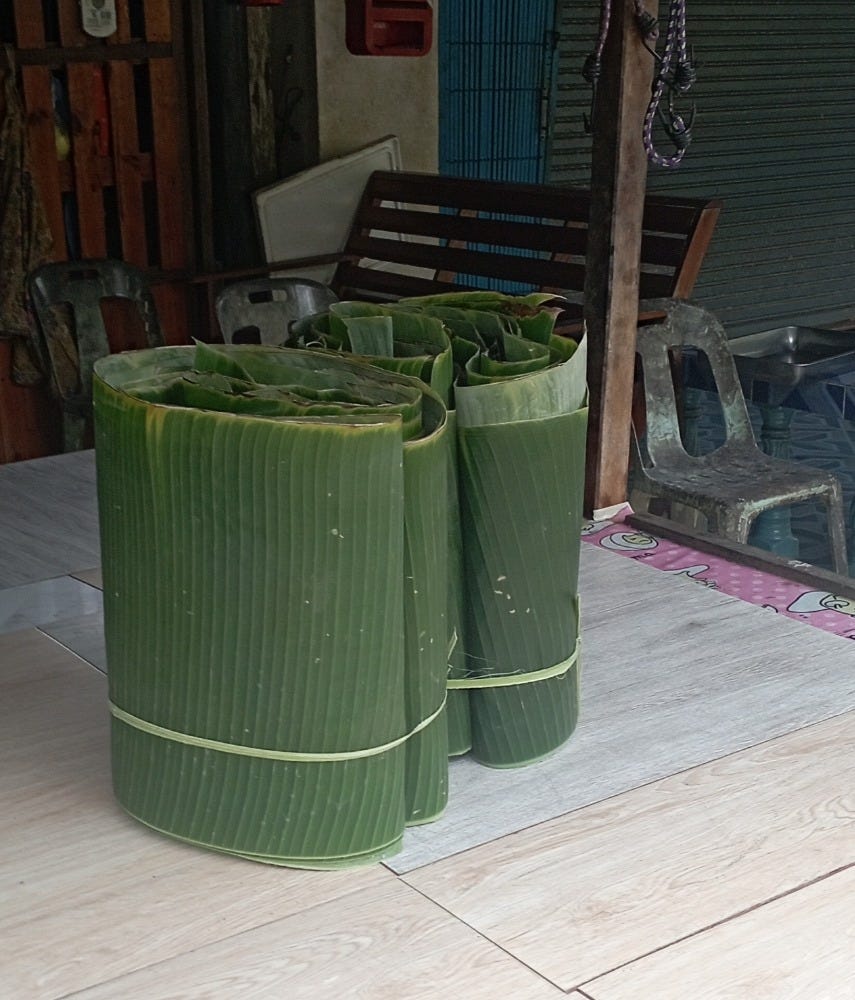
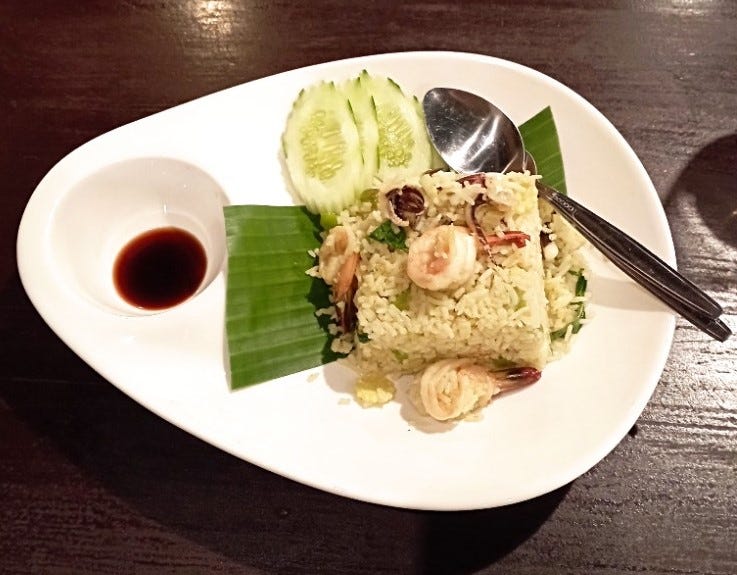
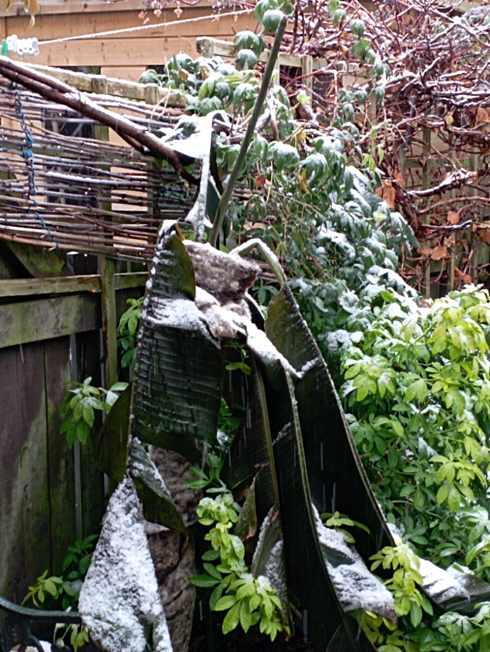
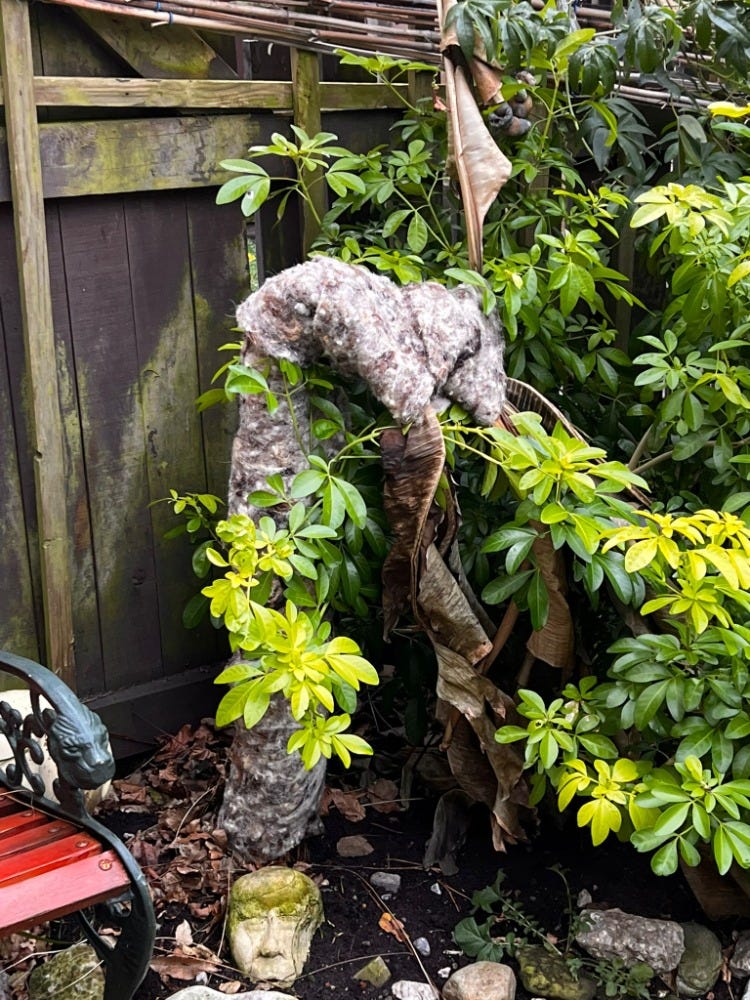
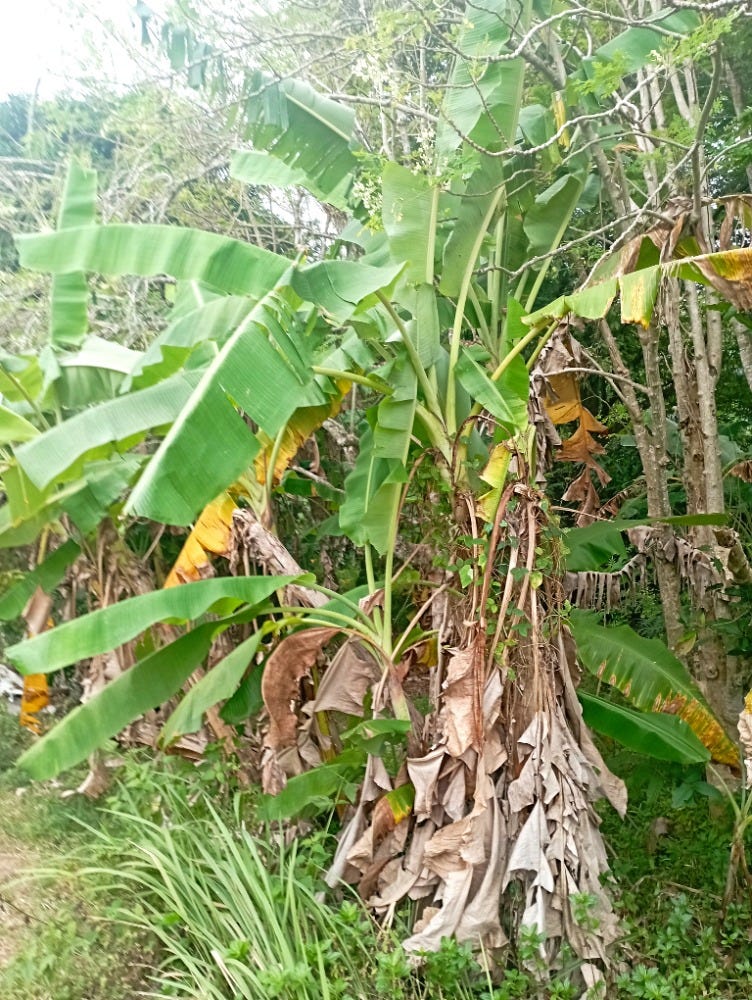
Thanks Mike! Yes such a shame about Musa.
Yes I think I will get a Chinese Rice Paper Tree next year. I did ask Danny to get me one for Christmas last year - 2021 but he couldn't find one and got me a lovely Calla Lily instead which I think may also have succumbed to the frost.